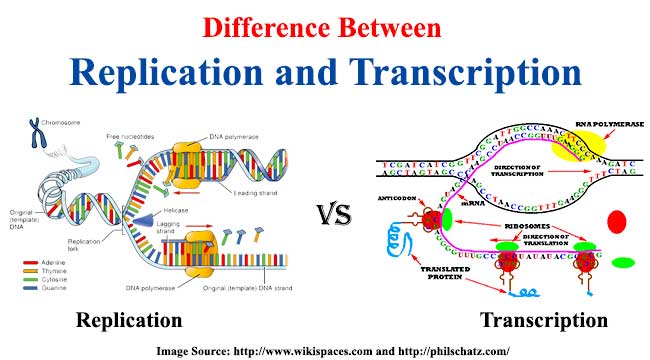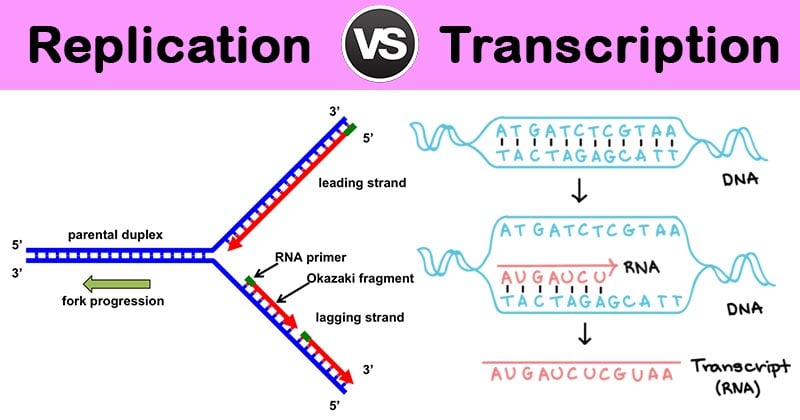Name the Types of Replication and Explain the Difference
The enzyme called DNA ligase joins them later. While the general idea of each is similar ie they replicate data they do it in 3 different ways.

Difference Between Aerobic And Anaerobic Fermentation Pediaa Com Biology Facts Study Biology Biology Lessons
Individuals with different phenotypes will have same abilities to survive and reproduce in a population.

. Therefore in one strand the template 3 5 it is continuous hence called continuous replication while on the other strand the template 5 3 it is discontinuous replication. Name the template strand for replication. Plan to devote a short paragraph for each.
Data is copied in real time from the publisher to the receiving databasesubscriber in the same order as they occur with the publisher therefore in this type of replication. Snapshot replication is best used as a method for replicating data that changes infrequently or where the most up-to-date values. Include for each type of replication a brief original psychological study example ie make up your own that is different for each type of replication ie do not build on the same example.
System replication is primarily to support disaster recovery and high availability in SAP HANA. I In long DNA molecules since the two strands of DNA cannot be separated in its entire length the replication occur within a small opening to the DNA helix referred to as a replication fork. When it undergoes replication forming a replication fork between A and C.
Briefly explain how replications relate to the concepts of generalization. Plan to devote a short paragraph for each. The leading strand is continuously synthesized and is elongated during this process to expose the template that is used for the lagging strand Okazaki fragments.
Explain the four different types of replications and the purpose of each. B why is DNA replication continuous and discontinuous in a replication fork. Include for each type of replication a brief original psychological study example ie make up your own that is different for each type of replication ie do not build on the same example.
Plan to devote a short paragraph for each. Explain the four different types of replications and the purpose of each. Replication has an original.
The SQL Server 2000-supported replication types are as follows Transactional. Briefly explain how replications relate to the concepts of. Changes at the Publisher are delivered to the Subscriber as they occur in near real time.
Following are three types of transparency. C State the importance of origin of. This bacteriophage type uses the lytic cycle for replication.
This is the first tip in a series of tips on SQL Server Replication there are 3 main types of SQL Server replication which we can implement these are Snapshot Transactional and Merge Replication. The replication technology allows you to make duplicate copies of your data move those copies to different locations and synchronize the data automatically so that all copies have the same data values. Review Chapter 13 from the course text.
An unrepaired nick in a DNA strand can lead to collapse of a passing replication fork. The lagging strand needs to be replicated in the opposite direction of the. They occur as fragments called Okazaki fragments.
Replication can vary across a potentially infinite set. In case of DDBMS the network should not be visible to the user. The different types of replications are a.
Repetition does not necessarily have one. Synchronous in-memory syncmem Synchronous sync Synchronous full sync Asynchronous async Let us learn about all four replication modes in detail in the sections to follow. A Why does DNA replication occur in small replication forks and not in its entire length.
Snapshot replication distributes data exactly as it appears at a specific moment in time and does not monitor for updates to the data. Explain two ways in which DNA replication can introduce doubled-strand breaks DSBs in a DNA template. Bacteriophage types Replication Virulent bacteriophages Lytic cycle cytoplasmic viral replication Virulent bacteriophages happen to be those that play in our interest as well as theirs.
There are different types of data replication process available such as transactional replication Snapshot replication and merge replication for various systems that. The leading strand is continuously synthesized and is elongated during this process to expose the template that is used for the lagging strandOkazaki fragments. This week you will learn about four types of replication procedures and you will develop original examples of each procedure with the goal of demonstrating generalization and external validity.
The lagging strand needs to be replicated in the. 3Repetition appears within a finite set of elements. DBMS users should not be concerned about the type of DBMS they are using.
Thus to provide network transparency. Explain the four different types of replications and the purpose of each. The data changes are applied to the Subscriber in the same order and within the same transaction boundaries as they occurred on the publisher.
Include for each type of replication a brief original psychological study example ie make up your own that is different for each type of replication ie do not build on the same example. Types of Data Replication Transactional Replication In Transactional replication users receive full initial copies of the database and then receive updates as data changes. Thus this is the main difference between leading and lagging strand.
Replication is based on the replication of objects including their material properties and composition. A lesion in a strand of DNA that makes the strand unable to be used as a template will stop at the replication fork. The Assignment 1-2 pages.
During the process of DNA replication DNA and RNA primers are removed from the lagging strand of DNA to allow Okazaki fragments to bind to. Ii The DNA-dependent DNA polymerases catalyse polymerization of the nucleotides only in 5 --- 3 direction. Explain what is meant by the statement Every gene has a control panel and a coding sequence.
There are primarily four types of replication modes for system replication. Explain the four different types of replications and the purpose of each. Leading strand refers to one of two strands of DNA found at the replication fork being replicated continuously while lagging strand refers to the other strand found at the replication fork replicating discontinuously in the 5 to 3 direction.
During the process of DNA replication DNA and RNA primers are removed from the lagging strand of DNA to allow Okazaki fragments to bind to. Replication can be random in appearance.

Difference Between Replication And Transcription

Eukaryotic Cell Vs Prokaryotic Cell Difference And Comparison Diffen Prokaryotic Cell Eukaryotic Cell Prokaryotes


0 Response to "Name the Types of Replication and Explain the Difference"
Post a Comment